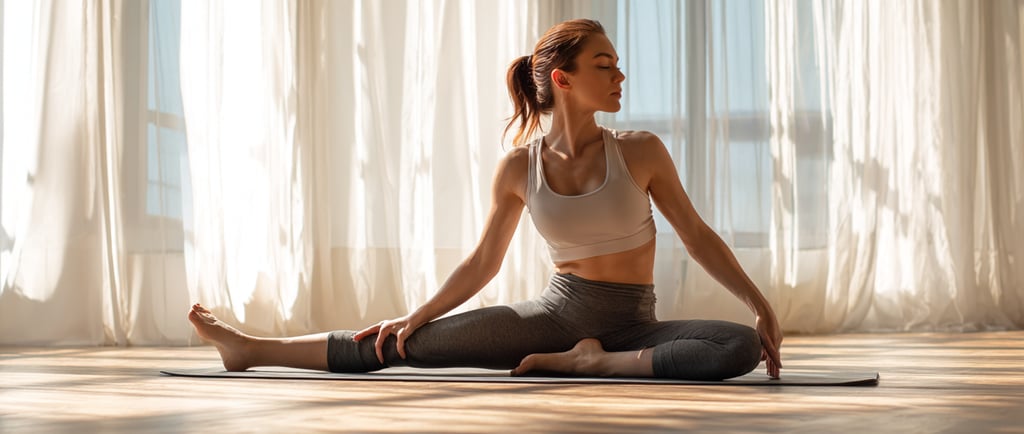
All products featured on Fit Nest Traveler are independently selected and reviewed by our team. If you click on a link and make a purchase, we may earn a commission at no additional cost to you.
Mastering Mobility
Combatting Travel Fatigue Through Strategic Stretching


In the ever-evolving landscape of remote work, professionals find themselves increasingly mobile, traversing time zones and continents with unprecedented frequency. While this newfound flexibility offers myriad opportunities, it also presents unique challenges—chief among them, the insidious specter of travel fatigue. As we navigate this complex terrain, it becomes imperative to arm ourselves with effective strategies to mitigate the deleterious effects of constant movement on our physical and mental well-being. At the heart of combating travel fatigue lies the often-overlooked practice of strategic stretching. Far from being a mere afterthought, a well-crafted stretching routine can serve as a powerful antidote to the rigors of travel, realigning both body and mind.
The key, as recent research suggests, is in understanding and working with our body's innate circadian rhythms—those natural 24-hour cycles that govern our physiological processes. Consider the insight offered by Mickey Beyer-Clausen, a Danish entrepreneur who has delved deep into the science of jet lag. His work, collaborating with preeminent researchers in circadian rhythms, has illuminated the critical role of the brain's master clock in orchestrating our body's myriad internal timepieces. By focusing our efforts on realigning this central chronometer, we can more effectively combat the disorientation and fatigue that often accompany long-distance travel.
A sophisticated approach to travel-induced stretching begins with an appreciation for the interconnectedness of our physical and mental states. As we extend and contract our muscles, we're not merely addressing physical tension; we're sending powerful signals to our brain, recalibrating our internal systems. This holistic perspective is crucial for the discerning remote professional seeking to maintain peak performance regardless of geographical location. Incorporating dynamic stretches that engage multiple muscle groups simultaneously can be particularly efficacious. These movements not only enhance flexibility but also promote blood flow, effectively combating the stagnation that often results from prolonged periods of sedentary travel.
For those moments when space is at a premium, such as in the confines of an airplane seat or a compact hotel room, isometric stretches offer a discreet yet powerful alternative. By focusing on controlled muscle contractions without visible movement, one can maintain muscle tone and improve circulation without drawing undue attention or requiring expansive space. It's worth noting that the efficacy of these stretching routines is significantly enhanced when coupled with mindful breathing techniques. Deep, diaphragmatic breaths not only oxygenate the blood but also activate the parasympathetic nervous system, promoting a state of calm and counteracting the stress often associated with travel.
For the tech-savvy remote professional, leveraging digital tools to support these stretching practices can prove invaluable. Apps designed to track and guide stretching routines can offer personalized recommendations based on travel schedules and individual needs. Some even incorporate light exposure strategies, a critical factor in managing jet lag and maintaining optimal circadian alignment. As we embrace the complexities of a globally connected work environment, it behooves us to approach travel fatigue with the same level of sophistication and intentionality that we bring to our professional endeavors.
By integrating targeted stretching routines into our travel regimen, we not only mitigate the physical toll of frequent movement but also cultivate a resilience that extends far beyond the confines of our physical bodies. In essence, these stretching practices serve as a bridge between the demands of our peripatetic lifestyles and the need for corporeal and mental equilibrium. As remote professionals, our ability to adapt and thrive in diverse environments is paramount. By mastering these techniques, we not only combat travel fatigue but also elevate our capacity for sustained excellence, regardless of the geographical challenges that lie before us.


